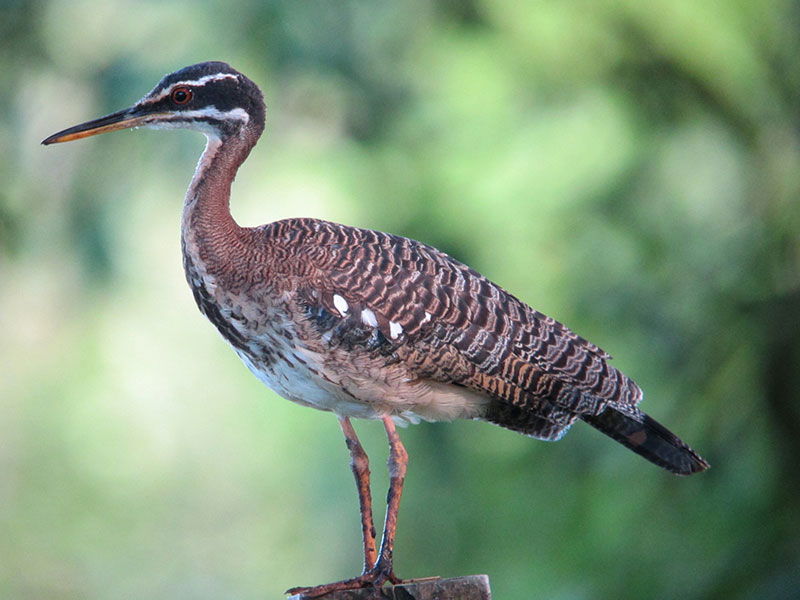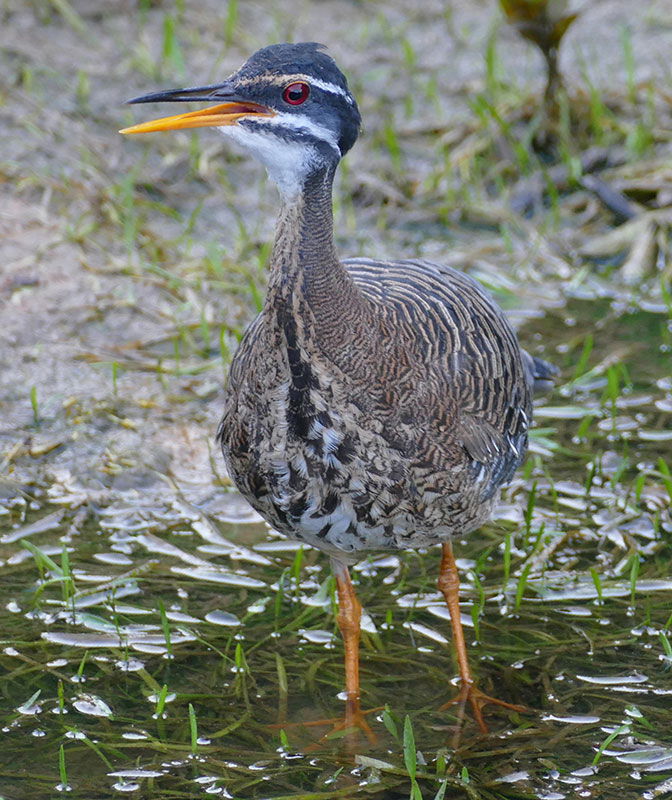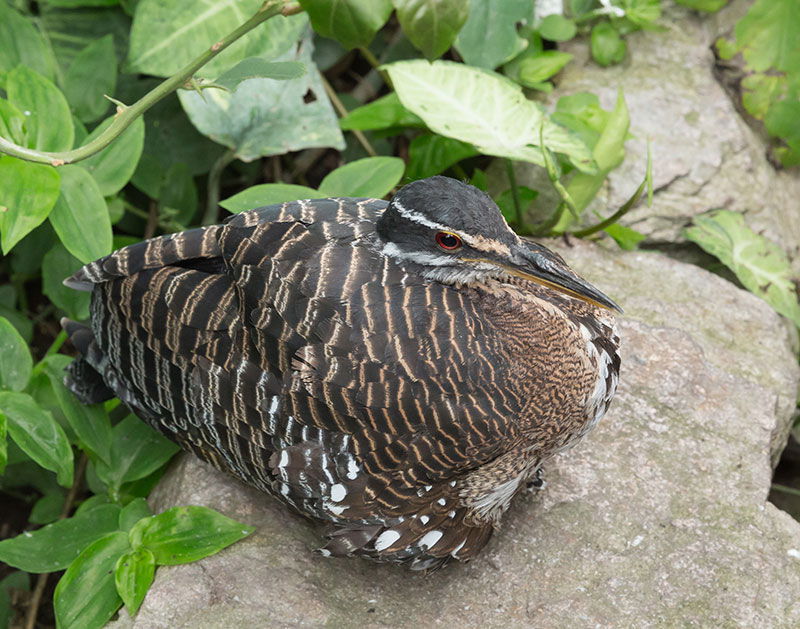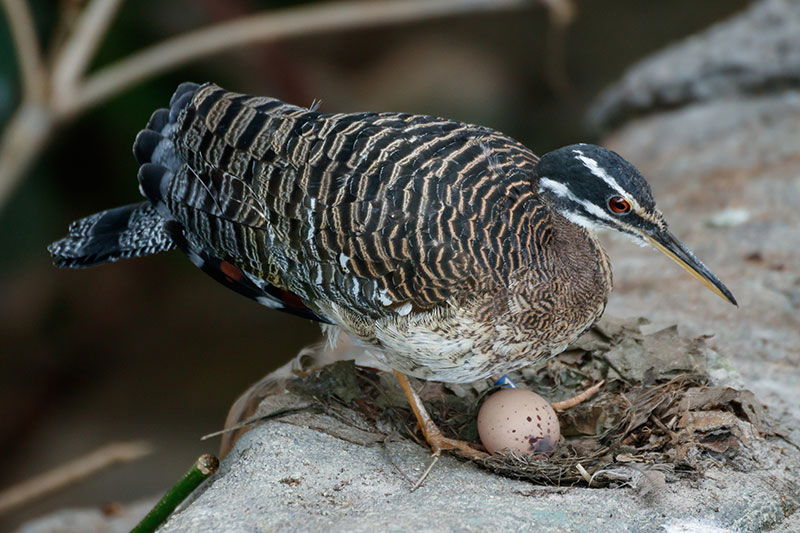Eurypygidae
Hey kids, welcome back to our series on the mysteries of created kinds.
This week’s kind is found only in South America and southern Central America. There is only one living species in this group of birds and very little is published about it.

The member of this kind lives in tropical rainforests and swampy areas.1 Though not commonly studied, the kind is not rare, and its range is believed to be expanding.2 We hope that its expansion makes it more accessible for study in the future.
Birds mate in the early part of the year and build nests in trees along the edge of water.3 Both parents are involved in the care of the nestlings.4 Insects and crabs are the top two food items provided to the nestlings.5 The parents continue to care for and defend the nest using unique eyespots on their wings for over a month after the nestlings fledge.6
Has anyone figured this one out yet? This week’s kind is the Eurypygidae—the sunbittern. Next week, we migrate west to Australia, looking for two species of bird.
Try out this fun crossword!
Clue
Your clue for the week is:
Your clue for the week is: The two species of this kind are known for being able to mimic many sounds, including man-made ones, but they are not parrots.
Footnotes
- Ivanete de Oliveira Furo, Amanda A. Monte, Michelly da Silva dos Santos, Marcella M. Tagliarini, Patricia C. M. O’Brien, Malcolm A. Ferguson-Smith, and Edivaldo H. C. de Oliveira, “Cytotaxonomy of Eurypyga helias (Gruiformes, Eurypygidae): First Karyotypic Description and Phylogenetic Proximity with Rynochetidae,” PLoS One 10, no. 12 (2015): https://journals.plos.org/plosone/article?id=10.1371/journal.pone.0143982.
- Héctor Cadena-Ortiz, Juan Escobar, Juan Cordero, Edison Moreno, and Gorki Ríos-Alvear, “Noteworthy Records of Sunbittern Eurypyga helias (Pallas, 1781) (Eurypygiformes, Eurypygidae) and Black-Necked Stilt Himantopus mexicanus (Statius Müller, 1776) (Charadriiformes, Recurvirostridae) from the Southern Andes of Ecuador,” Check List 14, no. 5 (2018): 801–804, https://www.researchgate.net/profile/Gorky-Rios-Alvear/publication/328102654_Noteworthy_records_of_Sunbittern_Eurypyga_helias_Pallas_1781_Eurypygiformes_Eurypygidae_and_Black-necked_Stilt_Himantopus_mexicanus_Statius_Muller_1776_Charadriiformes_Recurvirostridae_from_the_southe/links/5bb771efa6fdcc9552d453b8/Noteworthy-records-of-Sunbittern-Eurypyga-helias-Pallas-1781-Eurypygiformes-Eurypygidae-and-Black-necked-Stilt-Himantopus-mexicanus-Statius-Mueller-1776-Charadriiformes-Recurvirostridae-from-the-s.pdf.
- Bruce E. Lyon and Michael P. L. Fogden, “Breeding Biology of the Sunbittern (Eurypyga helias) in Costa Rica,” The Auk 106, no. 3 (1989): 503–507, https://www.jstor.org/stable/4087881.
- Betsy T. Thomas and Stuart D. Strahl, “Nesting Behavior of Sunbitterns (Eurypyga helias) in Venezuela,” The Condor 92 (1990): 576–581, https://sora.unm.edu/sites/default/files/journals/condor/v092n03/p0576-p0581.pdf.
- Lyon and Fogden, “Breeding Biology of the Sunbittern.”
- Thomas and Strahl, “Nesting Behavior of Sunbitterns.”
- © 2024 Answers in Genesis
- Privacy Policy
- Contact
- About





